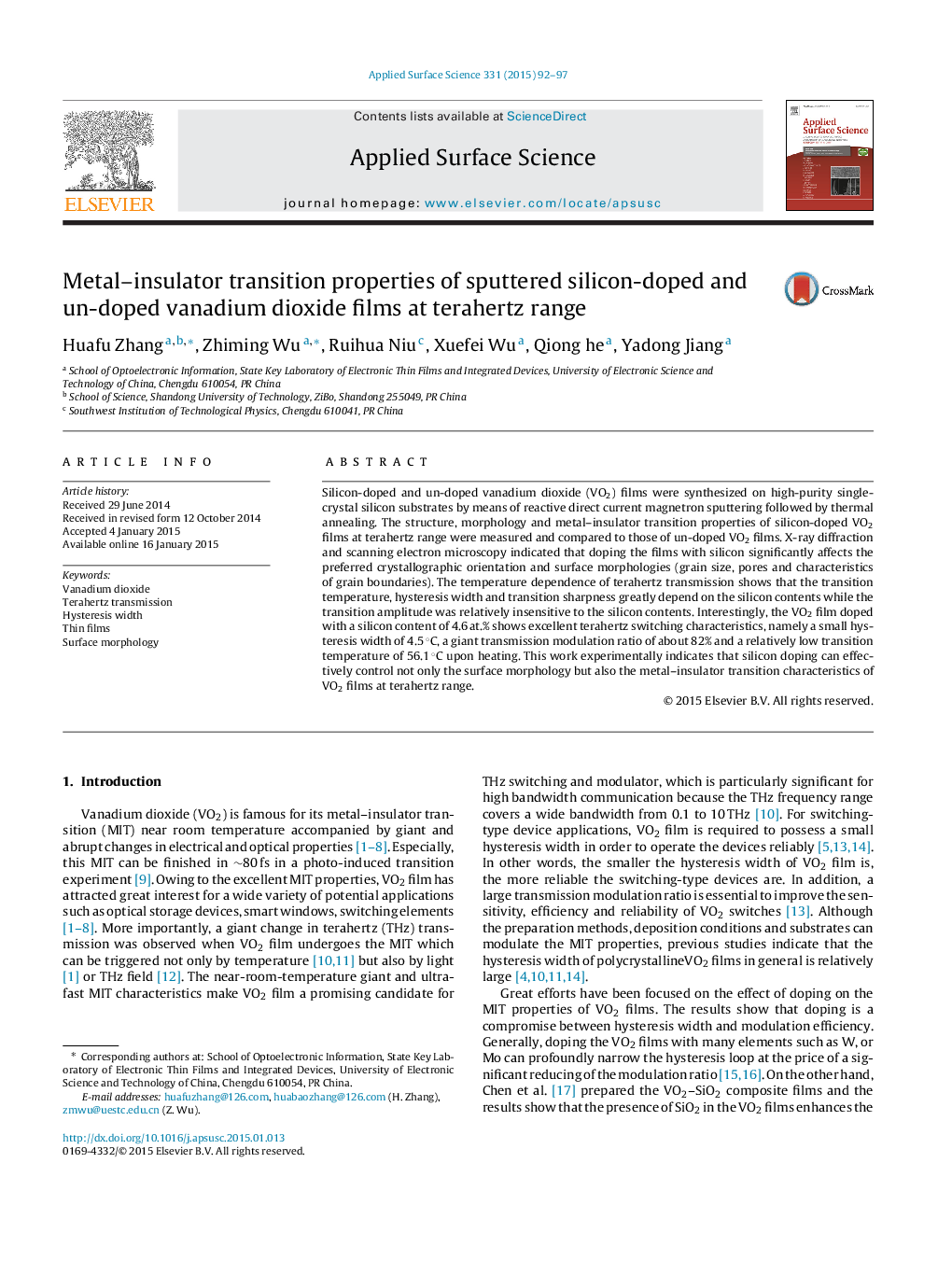| Article ID | Journal | Published Year | Pages | File Type |
|---|---|---|---|---|
| 5359050 | Applied Surface Science | 2015 | 6 Pages |
Abstract
Silicon-doped and un-doped vanadium dioxide (VO2) films were synthesized on high-purity single-crystal silicon substrates by means of reactive direct current magnetron sputtering followed by thermal annealing. The structure, morphology and metal-insulator transition properties of silicon-doped VO2 films at terahertz range were measured and compared to those of un-doped VO2 films. X-ray diffraction and scanning electron microscopy indicated that doping the films with silicon significantly affects the preferred crystallographic orientation and surface morphologies (grain size, pores and characteristics of grain boundaries). The temperature dependence of terahertz transmission shows that the transition temperature, hysteresis width and transition sharpness greatly depend on the silicon contents while the transition amplitude was relatively insensitive to the silicon contents. Interestingly, the VO2 film doped with a silicon content of 4.6 at.% shows excellent terahertz switching characteristics, namely a small hysteresis width of 4.5 °C, a giant transmission modulation ratio of about 82% and a relatively low transition temperature of 56.1 °C upon heating. This work experimentally indicates that silicon doping can effectively control not only the surface morphology but also the metal-insulator transition characteristics of VO2 films at terahertz range.
Related Topics
Physical Sciences and Engineering
Chemistry
Physical and Theoretical Chemistry
Authors
Huafu Zhang, Zhiming Wu, Ruihua Niu, Xuefei Wu, Qiong he, Yadong Jiang,
